Indianz.Com > News > Montana Free Press: Northern Cheyenne Tribe copes with COVID-19
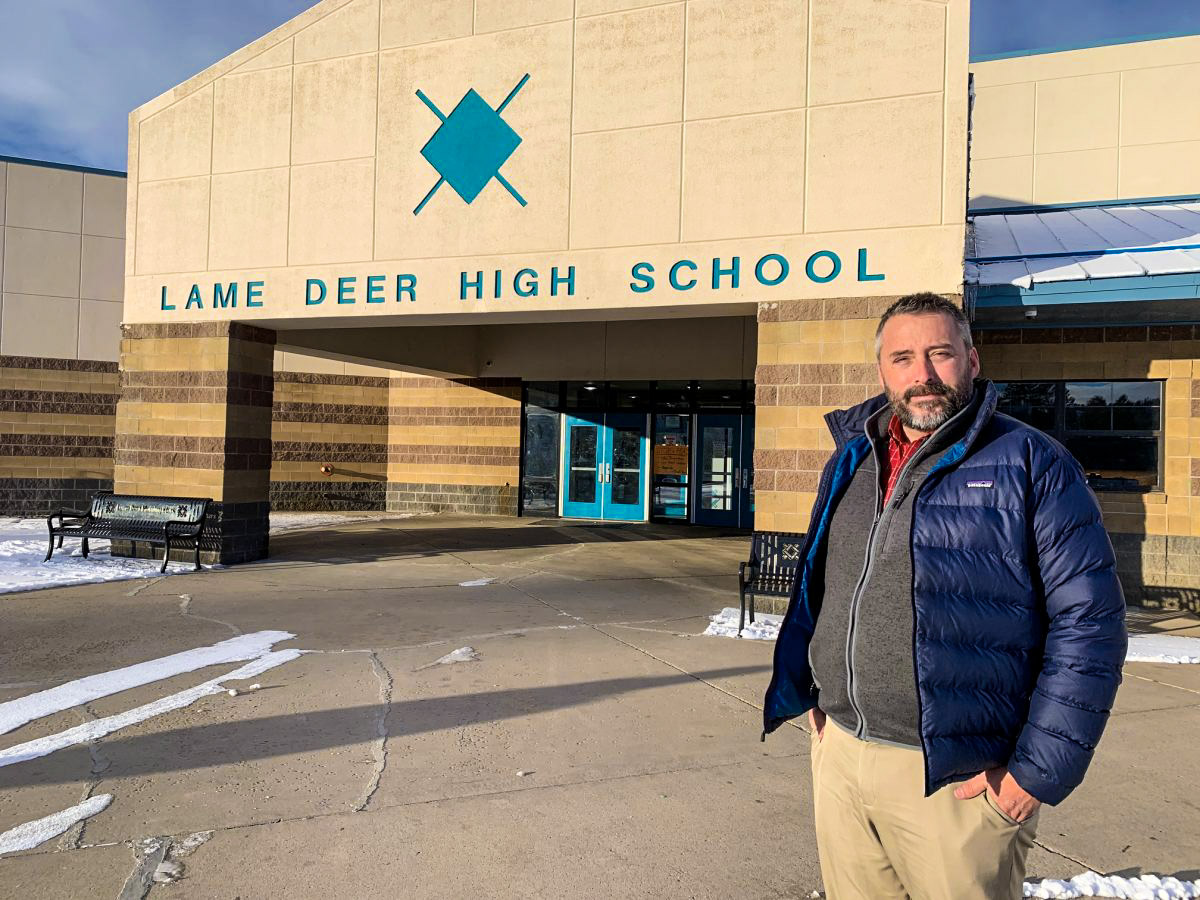
‘Survival mode’ in Lame Deer
COVID hit Lame Deer Public Schools hard, amplifying long-standing staffing shortages, disrupting routines, and giving administrators, teachers and students new lessons in resilience.
Friday, February 4, 2022
Montana Free Press
LAME DEER, Montana — Two miles south of this southeastern Montana town, Lame Deer High School is nearly hidden among snowy, pine-topped hills. Cows graze nearby, and the school’s unofficial dog sits patiently on its haunches, waiting for a friendly custodian to feed him.
Walk inside and you will be greeted by the Northern Cheyenne emblem — a diamond with four protruding lines representing the morning star — set on a bright teal background. The walls are painted with the “Morning Star” team name and Native artwork. A student-decorated tipi anchors the commons.
You will no longer be greeted by the high school secretary, Carmelita Onebear-Williams, who died at age 57 from COVID on October 31 after a short absence from school, according to the principal.
Onebear-Williams is one of five Lame Deer high school and elementary school staff who have died from COVID, according to administrators and staff. In addition to Onebear-Williams, a special education teacher, PE teacher, K-12 attendance/truancy officer and custodian have died from COVID, as has a school board member. The high school also recently lost a Cheyenne language teacher to another illness.
In this tribal community where many people are related, these and other deaths have deeply affected residents, school staff, and students.
“Everyone just called her Carmie,” junior Shandiin Kaline said, remembering Onebear-Williams while giving a visitor a tour of the school. “She really connected with a lot of the students. I used to have really bad anxiety, and she helped me with that.”
“We would see her every year and every day. She kind of really did everything,” said Chauncey Oldman, a junior. “We have no nurse here, and she played that role, too.”
“She was an auntie to all, getting after the students, chasing them to class, making sure they were OK, just being there for them,” said Carmie’s co-worker, Cheyenne language teacher Victoria Bearcomesout. “She would even walk around the school from one end to the other to make sure there were no kids hiding out.”
In taking lives, COVID has caused emotional loss and amplified chronic staffing shortages at Lame Deer’s public schools. As of Jan. 25, 14 elementary and 12 high school positions in the district are advertised on the Montana Office of Public Instruction’s jobs website. The elementary school currently employs 14 teachers and seven staffers, and the high school employs 17 teachers and 14 staffers.
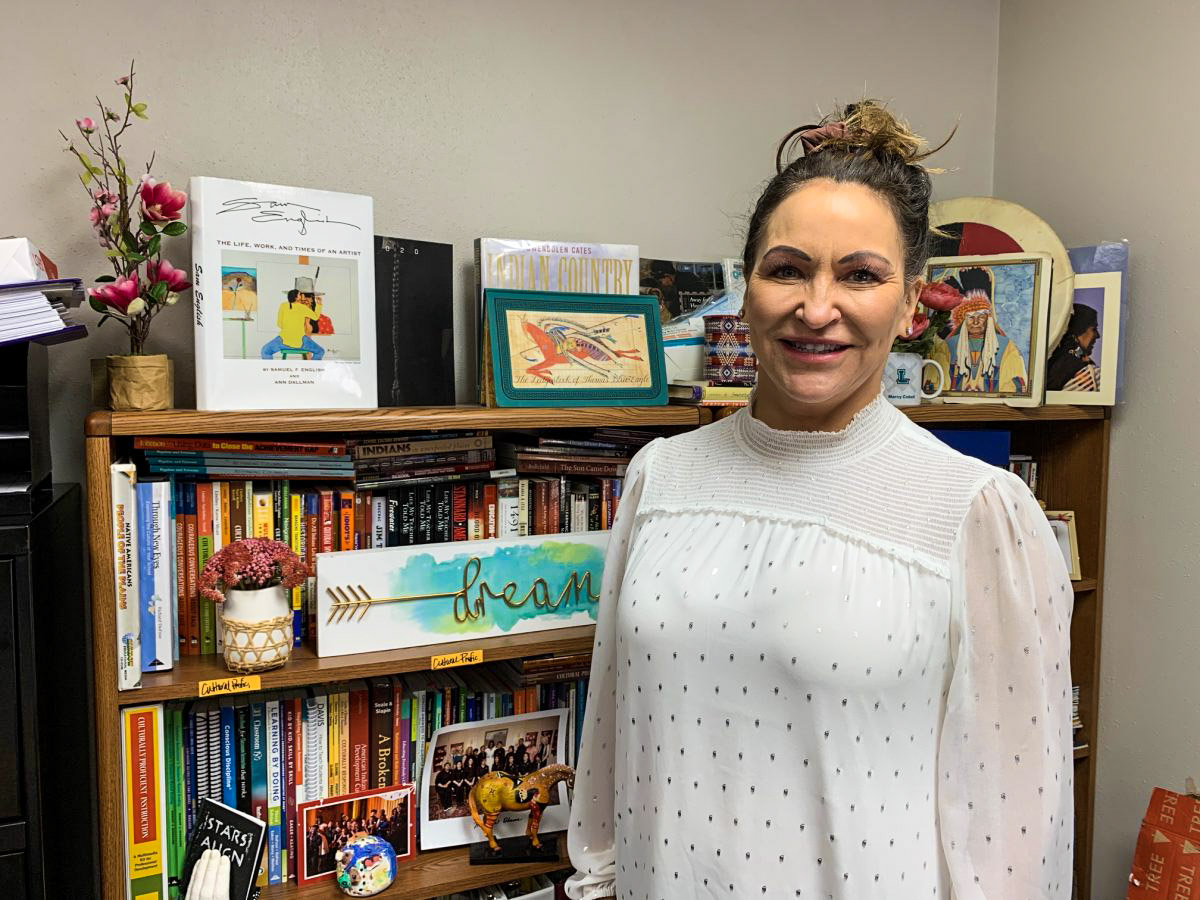
COVID AND THE COMMUNITY
Despite aggressive measures taken by the tribe and the school district to prevent viral transmission, as of mid-January, 51 people on the Northern Cheyenne Reservation have died from COVID-19, according to the tribal government website. About 6,000 tribal members live on the reservation.
The passing of Northern Cheyenne elders has devastated the community, according to Bearcomesout.
“Because of the COVID, we have lost a lot of our Native speakers,” she said quietly. “It is just so saddening to lose our elderly. They are the keepers of our wisdom and knowledge.”
Those losses make it even more urgent to teach Cheyenne culture and language to the younger generation, said Bearcomesout, one of some 300 fluent Cheyenne speakers remaining. “Our language is dying out, and we really need to do all that we can to start the healing process with this generation within the school system.”
Principal Foote said school officials began to understand the extent of COVID’s impact while applying for grants. “That’s when we started realizing that the majority of our students had lost one, two, or three people to COVID within their family dynamic,” she said.
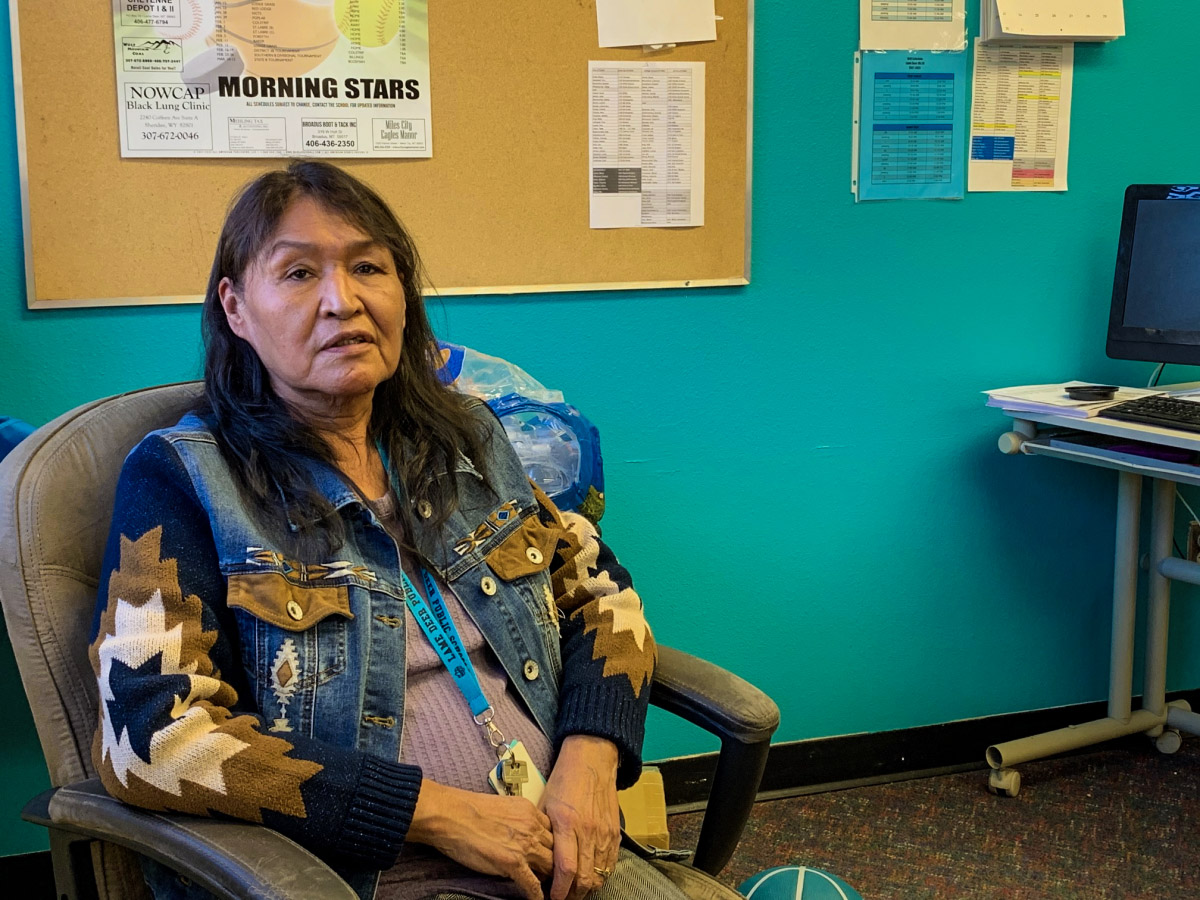
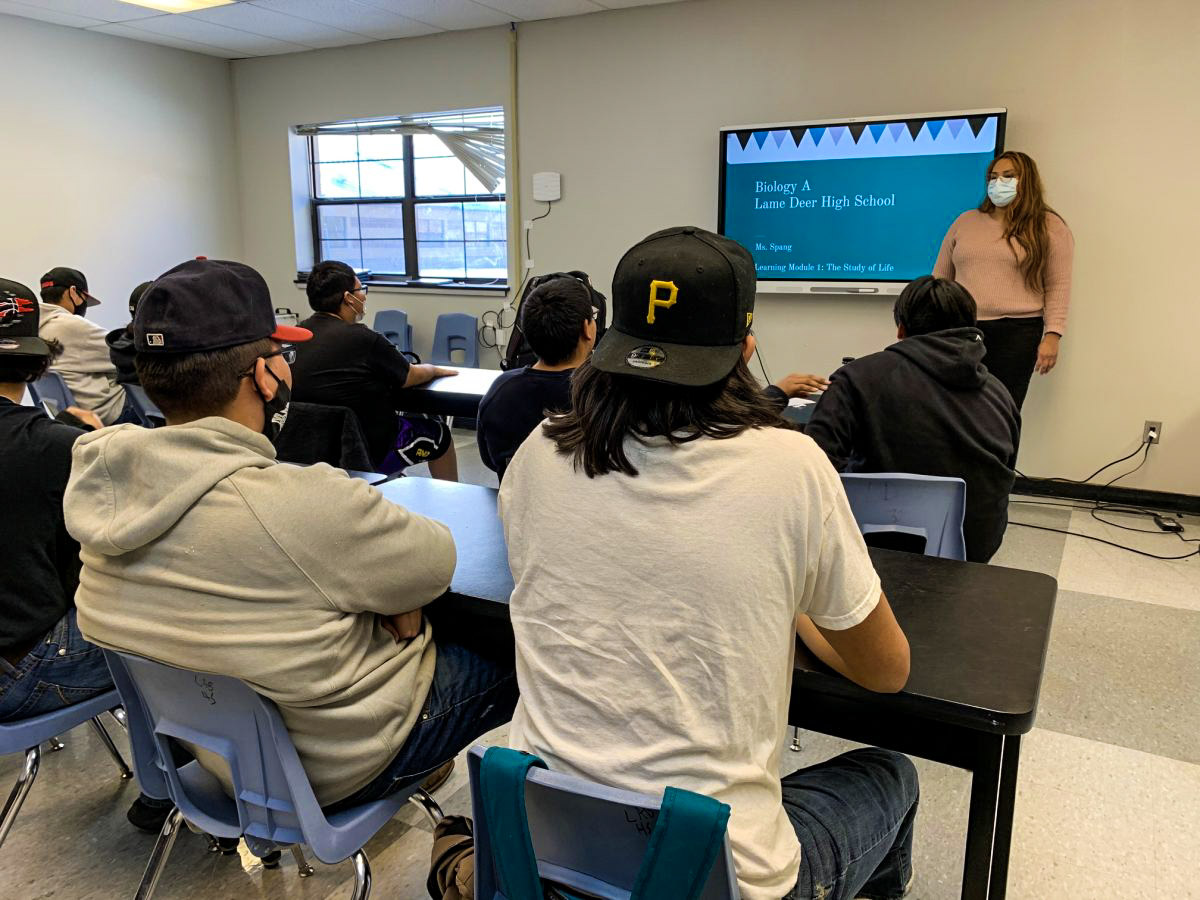
STAFF SHORTAGES
In addition to Bauer, four other elementary staff members retired and two moved away last year. The vacancies are being covered by new hires, restructured positions, and a combined first- and second-grade class, Foote said. Employees are filling in where needed, such as the secretary managing the student information system and federal reports and the custodian doing double duty in the cafeteria.
The elementary school’s all-Native student body of 282 still needs a kindergarten teacher, first-grade teacher and culture teacher, as well as a guidance counselor, assistant principal, attendance clerk and nurse.
Down the road, the high school staff is also stretched thin.
“I’m principal, vice principal, secretary, and attendance clerk right now,” Woods said while sitting at his desk fielding phone calls about water system repairs and new student enrollment.
With 315 students in grades 7-12, the all-Native high school is looking for an assistant principal, librarian, four teachers and three special education teachers, plus teacher aides, substitutes, bus drivers and monitors, coaches, a custodian and a social worker.
Administrators said regional job fairs have not been successful in attracting employees and noted that the area’s low socio-economic and rural nature may reduce its appeal. Local residents don’t apply for different reasons, they said, such as applicants lacking computer access, having “a lot on their plate already,” or being unable to pass background checks due to minor offenses committed in their youth.
“I think that we always struggle with filling positions,” Cobell said.
A TRIBAL TOWN
Home of the Northern Cheyenne tribal government, Lame Deer is a scrappy collection of buildings set in unexpected hills that rise from the plains 100 miles east of Billings. The town’s population of nearly 2,000, distributed between town and scattered neighborhoods tucked into the hills, doesn’t reveal itself at a glance.
The people who live here and their ancestors have suffered and survived years of trauma, from the tribe’s forced removal by the U.S. government to Oklahoma in the 1870s to wildfires in recent years and a continuing plague of poverty. Yet residents find inspiration in their resilient history, especially in Chiefs Little Wolf and Dull Knife (also known as Morning Star) who helped bring their people back from Oklahoma.
The words “Out of defeat and exile they led us back to Montana and won our Cheyenne homeland that we will keep forever” are printed on tribal documents and T-shirts.
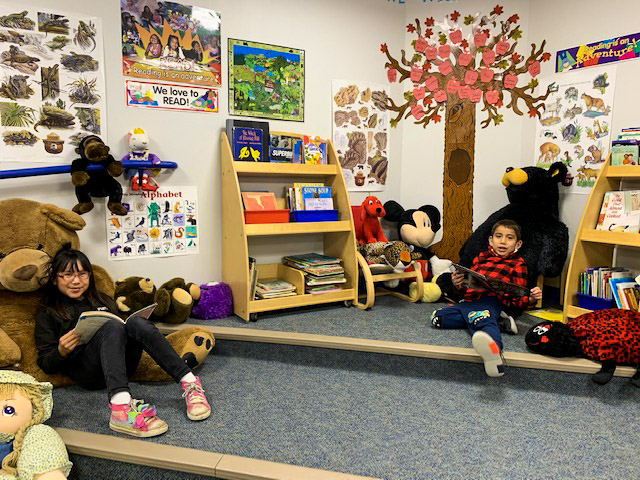
RECRUITMENT AND RETENTION
To help fill vacancies, the school district has looked abroad.
Sijo Varghese of Kerala, India, is one of three international teachers hired this school year. The other two are from the Philippines.
Because Varghese only recently moved to the U.S., his living room in teacher housing is sparsely furnished. He courteously offered food and drink while discussing his reasons for coming to Lame Deer, far from his wife and three children in India, with whom he Skypes daily.
In addition to the money (Lame Deer teachers make $45,000 to $70,000 annually, according to the superintendent), Varghese was drawn to Lame Deer by the opportunity “to experience and explore,” he said. In the U.S. on a J-1 visa, he teaches math and physics. He holds two bachelor’s and two master’s degrees in math and education and is working on a Ph.D. He has taught for 22 years in India and Maldives.
He said he finds his greatest satisfaction in helping students with academic deficits achieve.
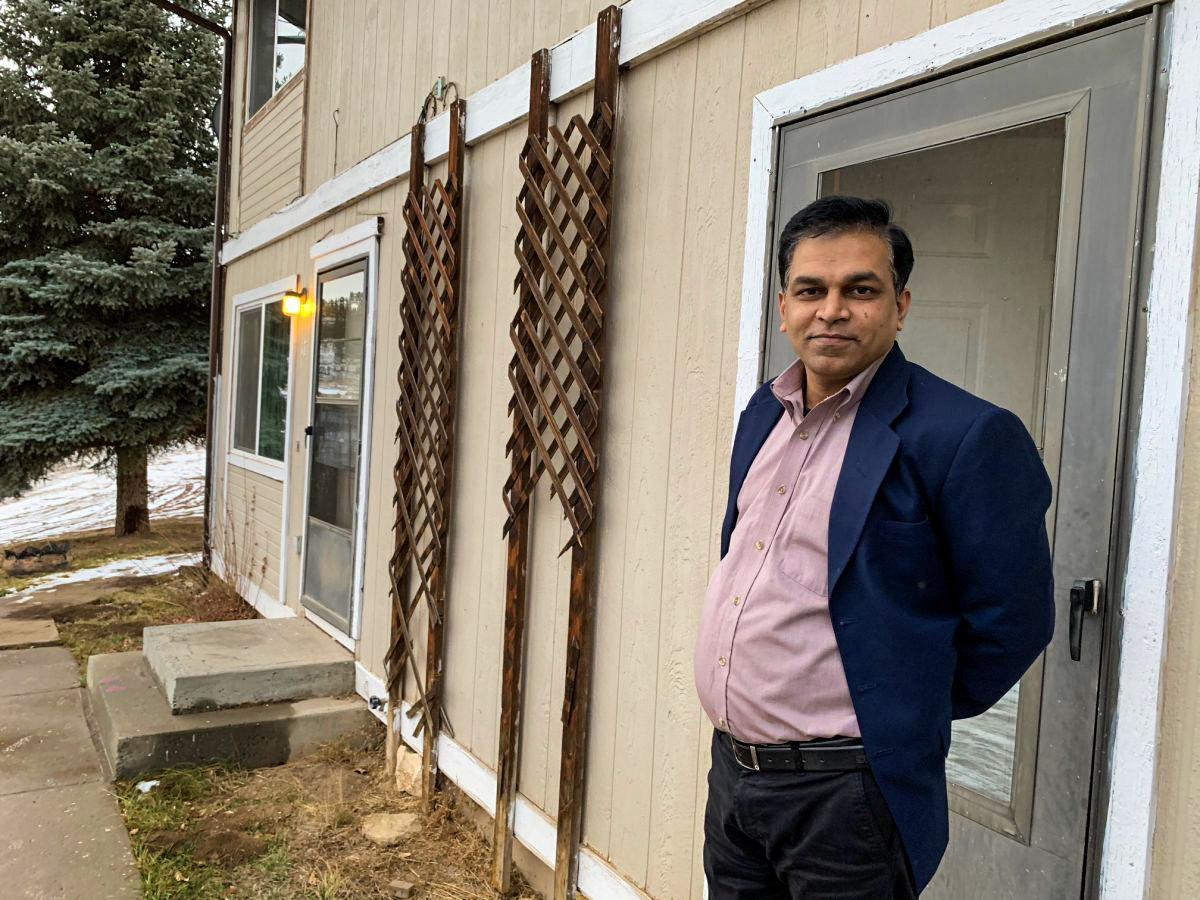
SURVIVING AND THRIVING
Lame Deer isn’t the only school district facing staffing and COVID challenges, but those challenges are intensified in this community with existing issues and low attendance rates (76% in grades 7 and 8, and 69% in grades 9-12 this fall). Students are losing consistency, class time, and the variety that comes with classes in music, P.E., library skills and Cheyenne culture, teachers and students said.
“We’re missing out on some lessons,” high school junior Chauncey Oldman said. “If it’s an elective, I don’t mind. If it’s a core class, I might fall behind.”
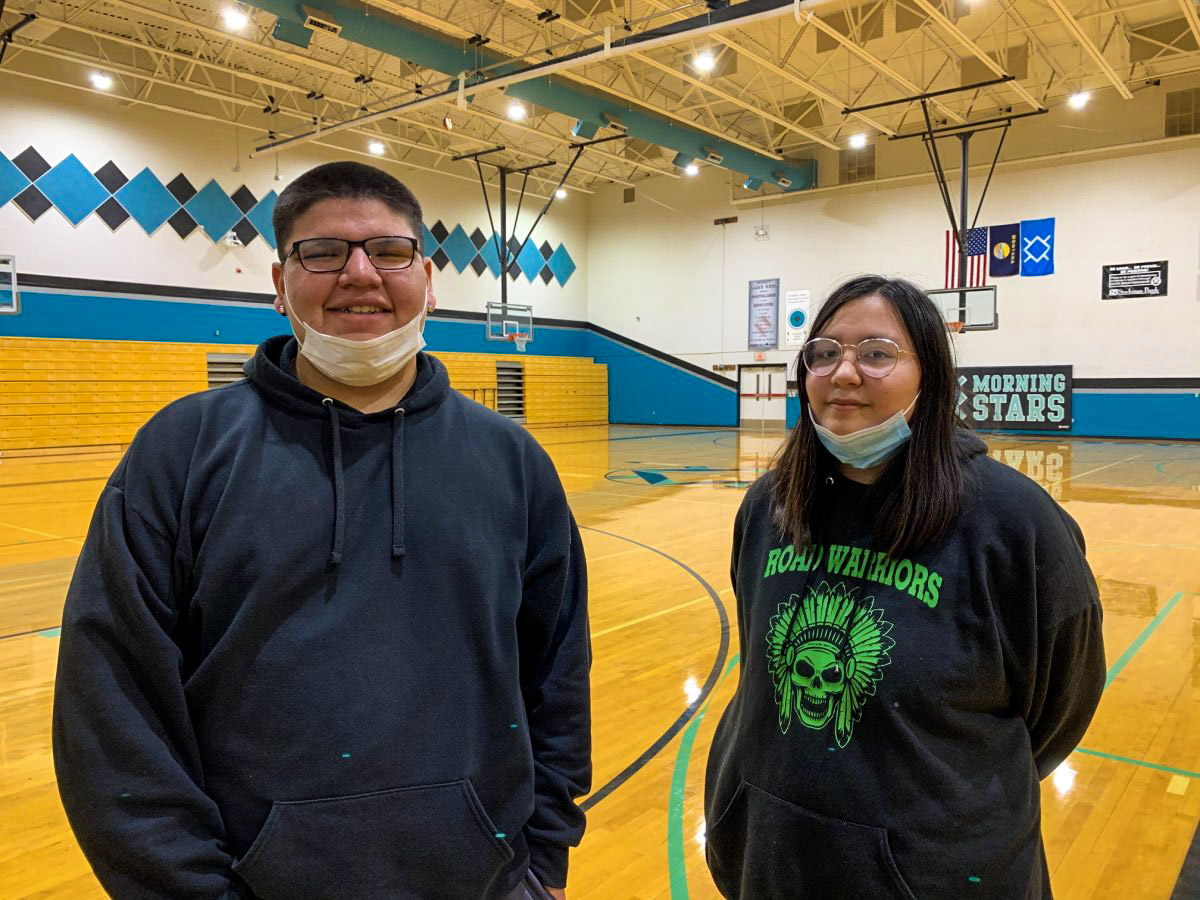
Jill Van Alstyne is a former eastern Montana reporter for the Billings Gazette and city government reporter for the Helena Independent Record. A graduate of St. Olaf College, MSU-Billings, and South Dakota State University, she taught English on the Crow Reservation and in Japan before joining the English department at Helena High School.
Note: This story originally appeared on Montana Free Press. It is published under a Creative Commons license.
Search
Filed Under
Tags
More Headlines
Cronkite News: Gathering addresses ‘epidemic’ among Native people
VIDEO: Cody Desautel on tribes and federal forest management
AUDIO: Legislative Hearing on Discussion Draft of Forest Management Bill
Native America Calling: Remembering the 1974 Navajo border town murders
Native America Calling: Can the right approach close the Native immunization gap?
Cronkite News: Long COVID cases remain high in Arizona
Native America Calling: Eyes in the sky for development, public safety, and recreation
Native America Calling: Three new films offer diverse views of Native life
NAFOA: 5 Things You Need to Know this Week
Chuck Hoskin: Cherokee Nation works toward cure for arthritis
Native America Calling: Protecting young people from the down sides of social media
Cronkite News: Fake ‘shaman’ among candidates failing to make Congressional ballot
Native America Calling: New Native voices in poetry
Cronkite News: Tribes air concerns about border at hearing in nation’s capital
Native America Calling: Indiginerds descend on Oklahoma City
More Headlines
VIDEO: Cody Desautel on tribes and federal forest management
AUDIO: Legislative Hearing on Discussion Draft of Forest Management Bill
Native America Calling: Remembering the 1974 Navajo border town murders
Native America Calling: Can the right approach close the Native immunization gap?
Cronkite News: Long COVID cases remain high in Arizona
Native America Calling: Eyes in the sky for development, public safety, and recreation
Native America Calling: Three new films offer diverse views of Native life
NAFOA: 5 Things You Need to Know this Week
Chuck Hoskin: Cherokee Nation works toward cure for arthritis
Native America Calling: Protecting young people from the down sides of social media
Cronkite News: Fake ‘shaman’ among candidates failing to make Congressional ballot
Native America Calling: New Native voices in poetry
Cronkite News: Tribes air concerns about border at hearing in nation’s capital
Native America Calling: Indiginerds descend on Oklahoma City
More Headlines